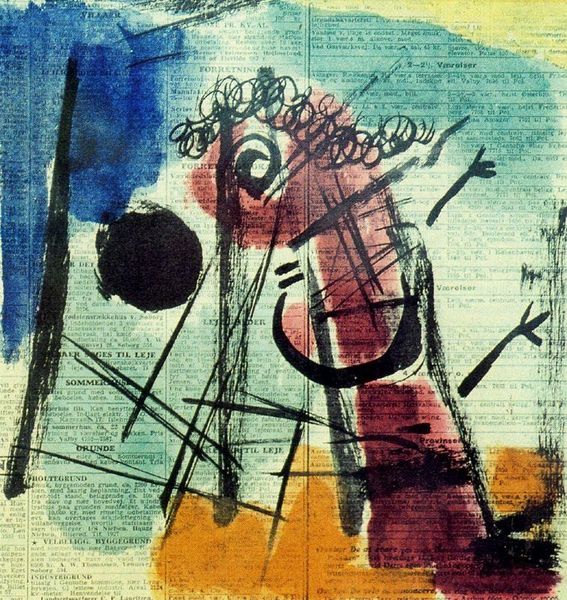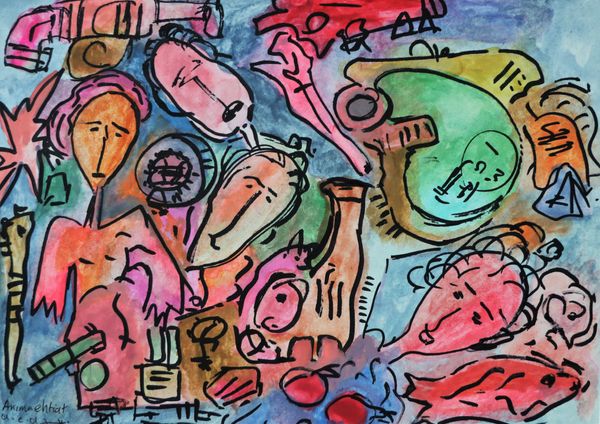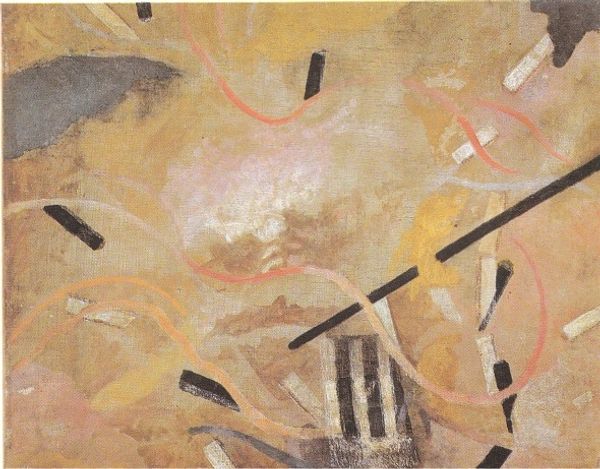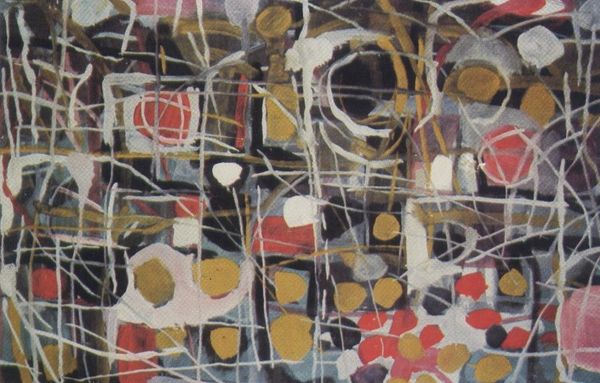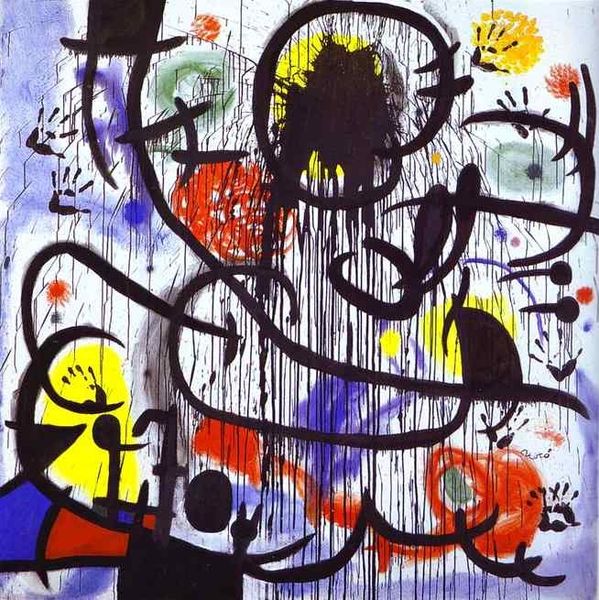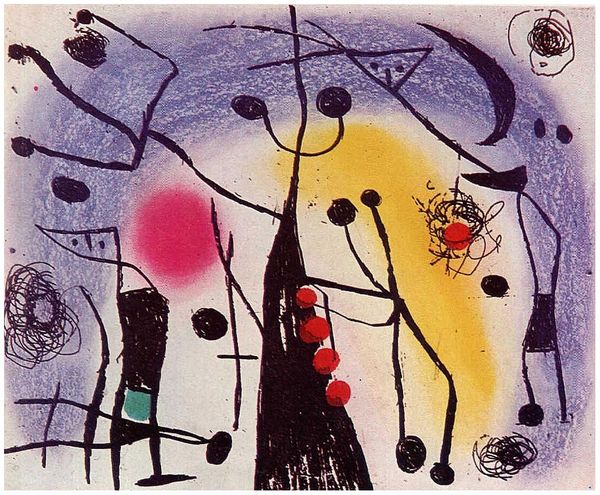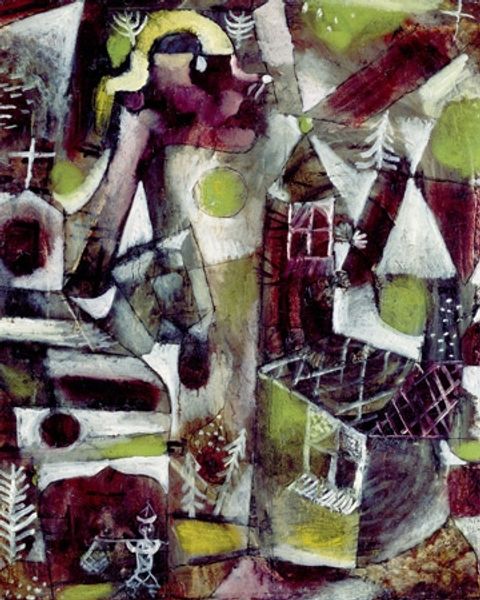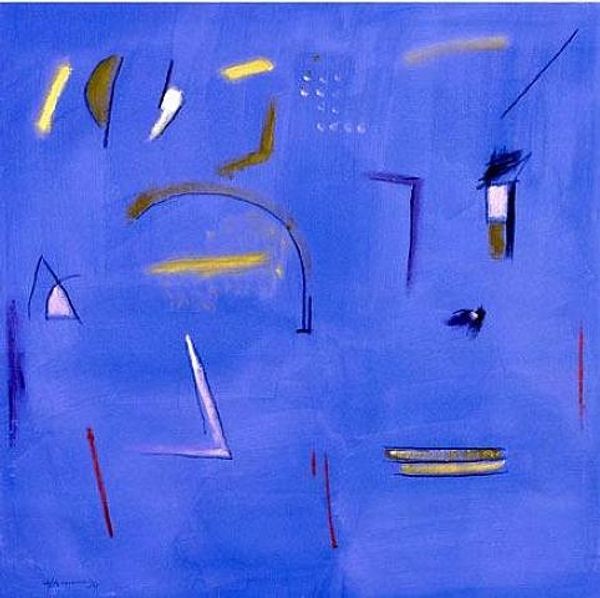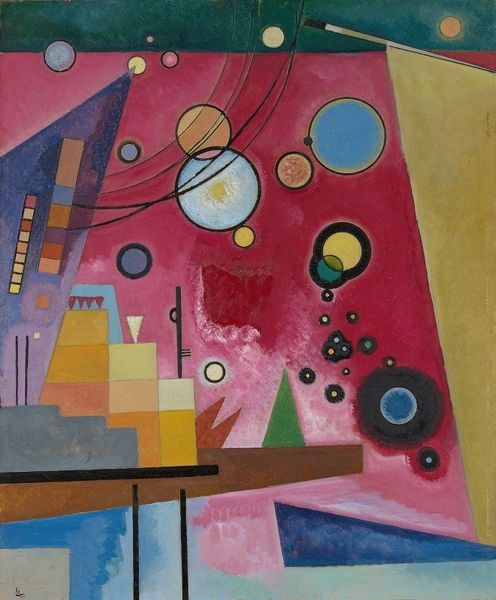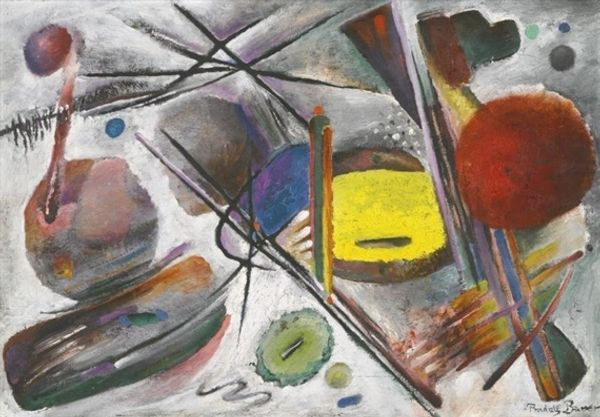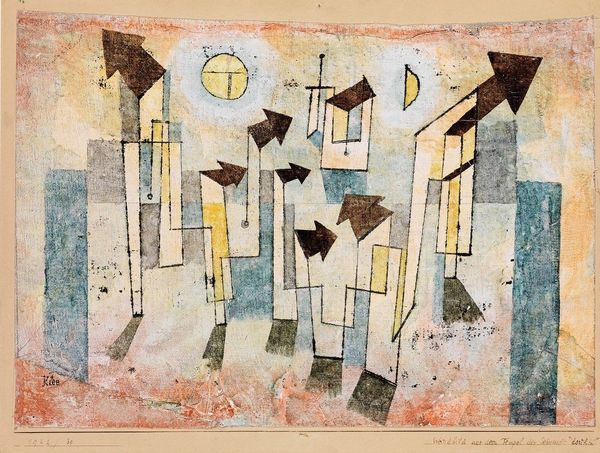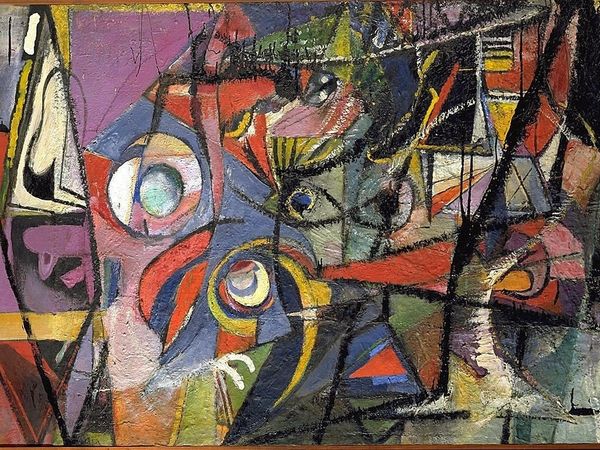
Dimensions: 30.46 x 24.36 cm
Copyright: Public domain
Curator: Here we have Paul Klee's 1939 watercolor titled "Angel Still Feminine." Editor: My first impression is this... it's almost childish. The simple lines, the muted watercolors, there's a sort of naive quality that feels deliberately crafted, almost like a child's vision of the apocalypse. Curator: The title offers an interesting entry point. The phrase “Angel Still Feminine” is textually grounded against what is seemingly a geometric composition of shapes, colors, and linework. Klee often combined the abstract with the representational, prompting a reading across pure aesthetics. Editor: Klee was working during the rise of Fascism in Europe, a terrifying time for Jewish people and many other communities deemed undesirable. Considering this context, are we looking at a fallen angel, an innocent victim in the face of destruction? Is the femininity a comment on the vulnerability imposed on women of this era? Curator: Semiotically, we can read the formal construction—the various circles, triangles, squares, the overlapping washes of color. The stark black lines are perhaps contour lines to guide our reading and decode the relationships of forms, their stability and orientation in the space they occupy. There's tension and resolution between these competing qualities. Editor: Perhaps, but consider also Klee's position within a deeply fractured Europe on the verge of war. What looks like naive geometry might also reflect the chaotic state of societal and personal identity under political siege. Klee fled Germany, so it stands to reason his experiences find expression in this deceptively simple work. The angel form itself could represent the many whose identities are lost in history, specifically, those whose gender and religion were villainized at the time. Curator: A valid argument, though I see this as an interplay between surface and depth. Klee's mastery lies in how he orchestrates pure visual elements to construct layered meaning—a testament to the self-sufficient and multi-faceted value of a truly realized image. Editor: And that brings me back to my starting point; to understand the depth, it’s imperative to consider Klee's social-political identity when this was made. Thanks for lending another eye here. Curator: My pleasure. Together we got at some ideas, yes?
Comments
No comments
Be the first to comment and join the conversation on the ultimate creative platform.
